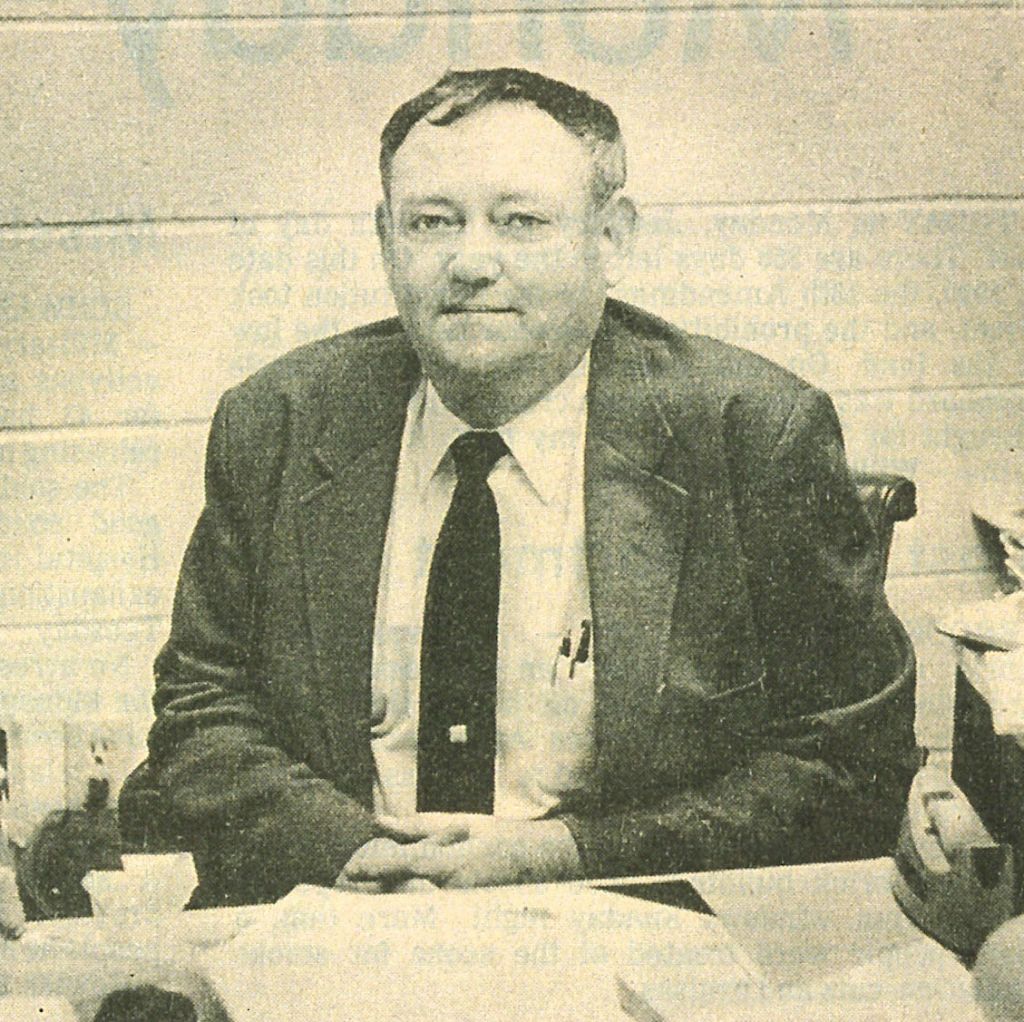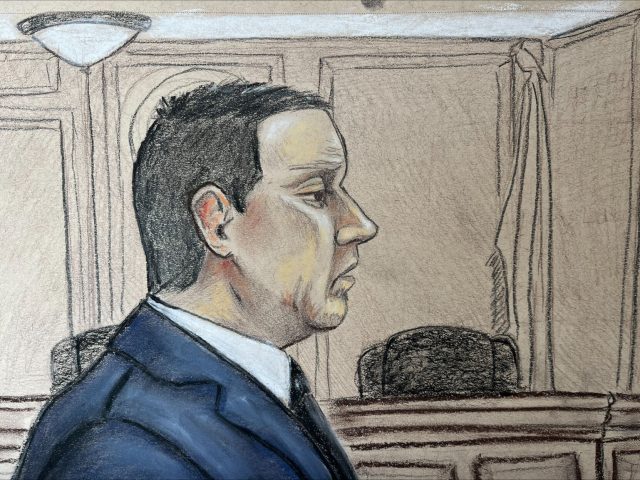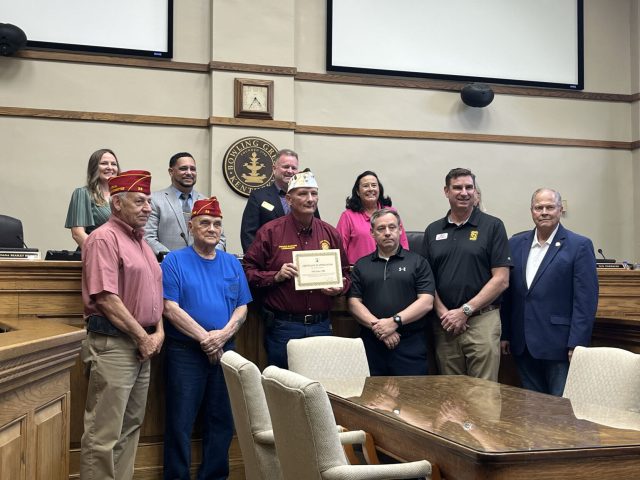Bootleggers and Bombs – Part Two: Attempt made on detective’s life, crime ring lands in court
Published 6:30 pm Saturday, July 6, 2019

- A Daily News photo of Darrell Moody upon his retirement from the Bowling Green Police Department in 1984.
A tenacious Darrell Moody was closing in.
The car theft ring that started in Bowling Green in 1968 had, by 1972, spread to 10 states. But the lucrative business had a problem: Moody, a detective captain in the Bowling Green Police Department, was working with the FBI and other law enforcement agencies to dismantle it.
Trending
For the group’s leaders, the solution seemed simple: Blow up Moody’s house, with him inside.
• • •
The car theft ring got its start in Bowling Green, apparently with the discovery that some makes of cars were especially convenient targets for theft and resale.
“Volkswagens were popular to steal because the (vehicle identification number) was easy to change, and then they could register them,” former Bowling Green police Chief Gary Raymer said. As the demand increased, the ring “began taking orders (for any particular type of stolen car). People jumped at that.”
A house on Old Iron Bridge Road west of Bowling Green was used as the location to alter the VIN numbers and process the stolen cars. As the business grew, the operation moved nearby to a former service station on Porter Pike. As the ring got more adept at falsifying bills of sale and other papers, it started selling the cars to dealers as well as individuals.
Moody was soon on its trail, and he proved to be a formidable foe.
Trending
Current Bowling Green City Commissioner Joe Denning, a former BGPD officer and Kentucky State Police trooper, said Moody “was one of the best investigators I’ve ever known.”
The sentiment is echoed by former Bowling Green police officer Jim Rogers, who said Moody had a photographic memory and was a tireless investigator who regularly had FBI agents and other law enforcement officials waiting at his office door to get information.
Gary Lusher, who served in various capacities with KSP from 1970 to 1994, said Moody was “a bulldog. He wouldn’t turn loose … and he was a very intelligent investigator.”
“His major goal was to wipe out that car theft ring,” Rogers said.
Those efforts put a target on Moody’s back.
Ever since the 1960s, when crime – often literally – exploded in Bowling Green, the crime rings thriving on the alcohol, gambling and theft business had no qualms about targeting law enforcement members, including in August 1963, when an unexploded bomb made of six sticks of dynamite was found under the car of Bowling Green Detective Sgt. Wayne Constant.
Don Stringer spent several decades as an editor with the Daily News, starting in 1969.
“It was an extremely violent city and county at that time,” Stringer said. Statistics gathered at the time showed the city with a crime rate several times the national average. There were as many as 26 murders in the county in a single year in the mid-1960s and bombings were a routine occurrence.
Aside from the violent crime rings operating in Bowling Green for more than a decade by then, the early 1970s were also a generally dangerous time for law enforcement.
Police officers “walked a beat with no car, no radio to call in backup,” Raymer recalled. “You had a nightstick, gun and handcuffs,” and, if you were lucky, “the goodwill of the people.”
The danger of the job was highlighted Dec. 19, 1971, when KSP Trooper William H. Barrett, 35, was ambushed and shot in Warren County in a murder that remains unsolved.
“There was a lot of anti-police sentiment at the time,” recalled Tommy Loving, a former KSP trooper and now head of the Bowling Green-Warren County Drug Task Force.
Around that time, a new criminal enterprise had also entered the picture – drug dealing, often based out of truck stops. The same roads that served as the highways for drug trafficking were soon also filled with stolen vehicles making their way to and from Bowling Green.
As arrests in the car theft operation appeared imminent, the leaders of the group “decided to have (Moody) killed,” Raymer said.
Rogers was a close friend of Moody’s. He recalls that on the night of Feb. 15, 1972, Moody’s brick bungalow on Henry Avenue was filled with police officers who were discussing reviving a local Fraternal Order of Police lodge.
Apparently, at some point that night or early the next morning, a bomb made of several sticks of dynamite was placed in the crawlspace under the Moody home.
Moody’s wife and stepdaughter left the house about 8 a.m. Feb. 16, 1972. Betty Moody had left to go to work at Ray’s Drive In, while her daughter was walking to the nearby T.C. Cherry Elementary School.
“Moody was a creature of habit – he never left home till 9 a.m.,” Rogers said. But as fate would have it, Moody had a court appearance that day and got into his Oldsmobile around 8:30 that morning to head to court.
“When he got in the car and turned the key, the house exploded,” Rogers said.
The bomb had apparently been set off by a remote control device.
“I had just turned the key, and I thought. ‘There goes my car,’ ” Moody told the Daily News in a 1984 interview. “But then I thought, ‘No, because I’m still here.’ ”
Rogers was among those who rushed to the scene.
“The house was just sticks,” he recalled.
Moody said he saw the house rise from its foundation from the force of the blast.
The destroyed house was never rebuilt, leaving a lot that remains vacant in the middle of a quiet Bowling Green street.
Despite the lengthy history of bombings in Bowling Green, the attack on Moody “got everyone’s attention,” Loving said.
The criminals “were not lacking for guts,” Lusher said.
Police quickly zeroed in on two suspects tied to the car theft operation as being responsible for the bombing, and they were indicted that day. Neither man made it to court.
One of the men, Melvin Eugene Moore, allegedly had raped a woman that same day and was making his escape on a highway near London when he was stopped by a state trooper. Moore shot and wounded the trooper and was putting him in the trunk of his cruiser when another trooper arrived on the scene and shot and killed Moore.
The other man indicted was Kenneth Wayne Taylor, who was still being sought by police when he was shot and killed later that year by another man with a criminal record.
Despite the attempt on his life, Moody was not the kind of investigator who would be scared off a case.
Moody had started walking a beat as a Bowling Green police officer in 1955. His salary was $2,748 per year for a job that was notoriously dangerous.
“You didn’t have any backup,” Moody told the Daily News in the 1984 interview. “You either whipped the other guy or got whipped. And I’ve gotten whipped a few times.”
One of Darrell Moody’s two sons from his first marriage is Kelly Moody, who said his father only talked about his career – including his brushes with death – when Kelly Moody was older.
Kelly Moody said his father had also once been shot in the stomach while policing.
“They tried to do everything to him,” Kelly Moody said.
Despite the violence around him, those who knew Darrell Moody described him as a warm and humorous person outside his law enforcement activities.
Kelly Moody said they would be having lunch at the former Murray’s restaurant “and people would come up and say, ‘Thank you for arresting me. You changed my life.’ ”
“He could be a silly, happy-go-lucky guy,” Kelly Moody said.
Family pictures show him dressed as a Keystone Kop, and Kelly Moody said his father had purchased a garish orange blazer at a thrift shop and made sure to wear it whenever he was scheduled to be on television.
“That was his interview jacket,” Kelly Moody said.
Hillary Hightower, an assistant commonwealth’s attorney in Bowling Green, is Darrell Moody’s niece.
“He was funny, smart … and a really good detective,” she said. He told her stories about the threats and attacks, but indicated “he would not have traded any of it.”
After the bombing of their house, the Moodys moved to a home on Magnolia Street, where that December they decorated the house for Christmas.
The car theft ring operators got word to Darrell Moody that if he took his Christmas tree down, they would make good on their efforts to kill him, Kelly Moody said.
“They were trying to make him look foolish,” he said.
But Darrell Moody turned the threat into a challenge, and decided to keep the tree up until the ringleaders were behind bars.
He said, “We’ll just celebrate Christmas all year long,” Kelly Moody recalled. “It was right in the window, lit up,” he said.
“He left that tree up for some time,” Lusher said. “He wasn’t one to give up.”
What few people knew, aside from Moody, was that the effort to destroy the car theft ring was already irrevocably in motion at the time of the bombing.
That summer, there were whispers around town that the investigation was coming to a conclusion.
“We suspected something big was coming,” Stringer said.
And it was.
Based largely on Moody’s work, 41 people were indicted in August 1972 by a federal grand jury on charges related to operating the car theft ring. Seventeen were from Warren County. According to the indictments, the ringleaders were also conspiring to kill other witnesses as law enforcement closed in on them.
Ultimately, 22 people faced trial in U.S. District Court in Bowling Green in April 1973. Because of the number of defendants and the reach of the ring, officials said they expected one of the longest and costliest trials in state history. More than 900 witnesses were expected to be called and the federal government rented the Capitol Theater to help house them during the trial.
At the trial, held under intense security, several informants testified to being part of the ring, saying they stole about 1,800 cars in roughly four years from across the region. Many were brought to Bowling Green to be distributed by the Bowling Green-based car theft operation.
Other evidence presented during the trial included license plates from stolen vehicles that were found dumped in a pond off Lovers Lane. Moody also testified about his investigations.
The trial lasted one day short of eight weeks and, after nine hours of deliberations by the jury, ended in the convictions of 19 men on conspiracy charges. Three defendants were acquitted. Those found guilty were each sentenced to the maximum: five years in prison and fines of $10,000.
Darrell Moody’s Christmas tree finally came down.
• • •
Crime eventually diminished in Bowling Green due to several factors. Other areas went wet, leaving local bootleggers with less business; many in the crime rings were behind bars, or dead; and more law enforcement resources were made available as the outcry against the violence escalated. The local FBI office expanded and task forces were established here to take a more collaborative approach to fighting local crime.
“Since they were arrogant enough to bomb Moody, that brought a lot more focus” on the crime rings, Lusher said. “That led to their demise.”
Stringer said the Daily News put more focus on the issue as well.
“We got real aggressive in covering (the crime spree). We started throwing statistics out,” Stringer said, recalling that the head of the local Chamber of Commerce called him to complain that “we are going to run businesses out of town. We asked him what he preferred, more businesses or people getting killed.”
Several observers said Bowling Green at the time had the reputation of a community that tolerated some lawlessness.
Conspicuous evidence of that was Pauline’s, a notorious brothel that was allowed to operate on Clay Street for decades before madam Pauline Tabor closed her business in the late 1960s.
“That helped, too,” Stringer said of the efforts to repair the city’s reputation.
Moody was able to witness the crime decrease firsthand. He retired from the Bowling Green Police Department in 1984 after 28 years of service.
He died in 1998 at the age of 67. Unlike his successful efforts to defeat the criminals ravaging Bowling Green, he had lost his battle with cancer.
This is Part Two of the Daily News’ exclusive series on the crime spree of the late 1960s and early 1970s that earned Bowling Green the nickname “Little Chicago.” To read Part One, click here.






